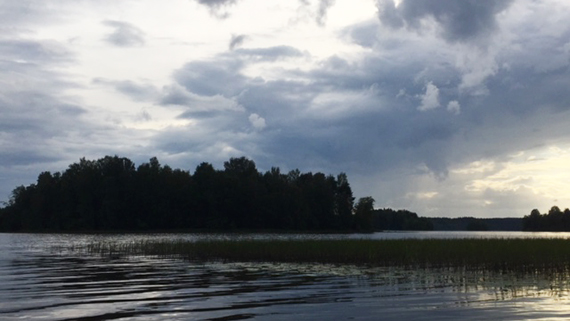Heavy rainfall and the Rauli storm in the main roles in August

According to the FMI statistics, August was exceptionally rainy in some areas in the Ostrobothnian provinces and in Lapland, i.e. similar levels of precipitation are experienced in these areas on average once every 30 years. The monthly rainfall in areas with the most precipitation was mainly 100–150mm, which is 1.5–2 times the usual amount. Riimala in Mustasaari received the highest amount of precipitation, which was 206.3mm. Mid-August was especially rainy, with 74.7mm of precipitation received within a period of 24 hours in Kauppilankylä, Teuva, on 14 August. The levels of precipitation in other parts of the country, i.e. mainly in the southern and central parts of the country, varied between 60mm and 120mm. The driest area was Päijät-Häme.
The average temperature in August was close to the long-term average in a large part of the country. Compared with the usual temperatures, the area near the eastern border was the warmest and Western Lapland was the coolest. The highest temperature for the month, 26.1°C, was measured in Lappeenranta on 22 August and the lowest temperature, -2.6°C, in Naruska, Salla, on 30 August.
The long-lasting gusts of wind during the Rauli storm, unusually strong for summer, caused power cuts in large areas especially in the central part of Finland on 27 August. Read more on the Rauli storm in the Ilmastokatsaus journal (in Finnish): http://www.ilmastokatsaus.fi/2016/08/29/rauli-nousi-myrskyjen-raskaaseen-sarjaan/
Summer record rainy in Ostrobothnia and Lapland
Precipitation levels for the summer (Jun–Aug) were record high in Ostrobothnia, Central Ostrobothnia and Lapland. In these areas, the amount of rainfall rose to more than 300mm in many areas and was even twice as much as usual in some areas. The highest rainfall this summer, 449mm, was received at the Kenttärova station in Kittilä. The summer was slightly drier than usual mainly in the southeastern part of the country.
The average temperature for the summer was slightly higher than usual in a large part of the country. The greatest deviation from the long-term average, about 1°C, was experienced in Eastern Lapland.
Hot summer days were distributed unevenly. May saw six days with temperatures exceeding 25°C, June 11 days and July 16. There were only 2 hot days in August. As a result, the total number of days with temperatures above 25°C during the summer months was 35, which is normal.
Temperatures did not exceed 30°C anywhere in the country this summer and 29.1°C in Kevo, Utsjoki, on 23 July remained the warmest temperature recorded. The last times highest temperatures remained below 30°C were in 2008 and 2009.
Number of lightnings in the summer remained below average
About 113,000 cloud-to-ground lightning strikes were observed in Finland during the summer months, which is slightly below the average of 135,000 lightning strikes. In August as well as in June, the number of lightning strikes remained at about half of normal.
Further information:
Weather statistics from the Climate Service tel. 0600 1 0601 (€4.01/min + local charges)Weather forecasts from the meteorologist on duty 24 h/day tel. 0600 1 0600 (€4.01/min + local charges)
A more extensive report on the Rauli storm is available at www.ilmastokatsaus.fi (in Finnish)
